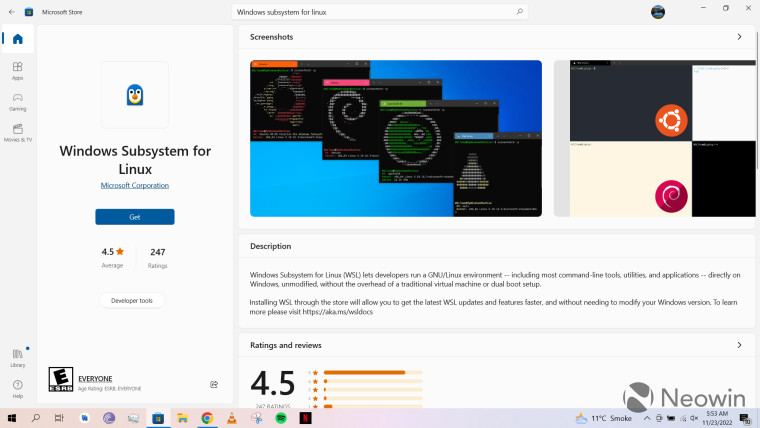Over a year ago, Microsoft brought Windows Subsystem for Linux (WSL) to the Microsoft Store on Windows 11 in a preview state. For those unaware, WSL is a very useful capability that Microsoft added to Windows 10 in 2017. It enables developers to run GNU/Linux environments directly in Windows without requiring virtual machines (VMs) or dual-boot configurations. Today, the company has made WSL generally available in the Microsoft Store for both Windows 10 and Windows 11.

With the release of version 1.0.0 of WSL, Microsoft has ditched the "Preview" tag. Additionally, it has made this variant of WSL the default experience for people who run the wsl --install or wsl --update commands.
Microsoft has touted several advantages of installing the Store version of WSL. Among these are faster updates, better error printing, WSLg and WSL packed in a single package, and the ability to opt-in for systemd support, among many other things.
Some other improvements introduced by backporting the Microsoft Store version of WSL to Windows 10 and making it the default experience on both OSes also includes:
- wsl.exe --install will now automatically install the Store version of WSL, and will no longer enable the “Windows Subsystem for Linux” optional component, or install the WSL kernel or WSLg MSI packages as they are no longer needed (The Virtual machine platform optional component will still be enabled, and by default Ubuntu will still be installed).
- wsl.exe –install` also now includes:
- --inbox Installs WSL using the optional Windows component instead of using the Microsoft Store
- --enable-wsl1 Enables WSL 1 support during the install of the Microsoft Store version by also enabling the “Windows Subsystem for Linux” optional component
- --no-distribution Do not install a distribution when installing WSL
- --no-launch Do not automatically launch the distro after install
- --web-download Download the most recent version of WSL from the internet instead of the Microsoft Store.
- wsl.exe --update will now check for and apply updates for the WSL MSIX package from the Microsoft Store, rather than updating the WSL kernel MSI
- When running WSL using the Windows optional component version, once a week we will show a message on start up indicating that you can upgrade to the Store version by running wsl --update.
There is a known issue in the Microsoft Store release though: WSL may fail to start if you are running in a "session 0" session.
For now, this new experience of WSL is available to seekers only, but it will be rolled out automatically to everyone by mid-December. The seeker process involves checking for Windows updates and then installing KB5020030 if you"re on Windows 10, or KB5019157 if you"re on Windows 11. You can then run the wsl --install (new users) or wsl --update (existing users) commands to get the Microsoft Store version of WSL. Or, you could manually install the latest release from GitHub.
It is important to understand that if you"re running a WSL 1 distro, you still need to manually install the "Windows Subsystem for Linux" optional component. More importantly, the built-in Windows version of WSL will only receive critical bug fixes moving forward, new features will be exclusive to the Microsoft Store version.
You can download Windows Subsystem for Linux from the Microsoft Store here.